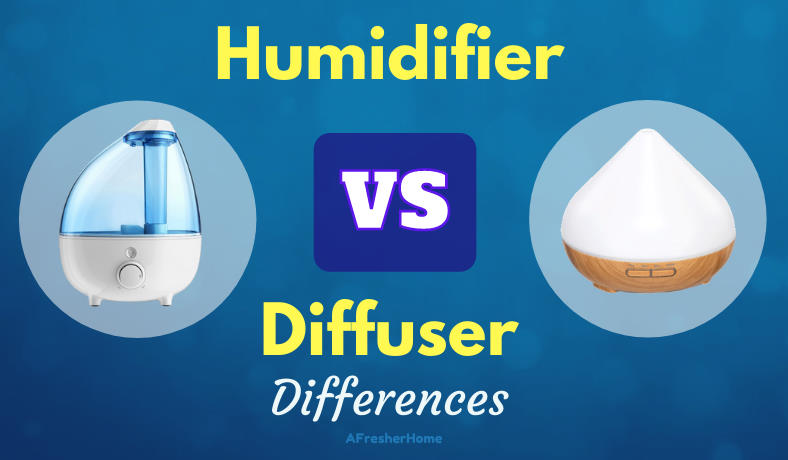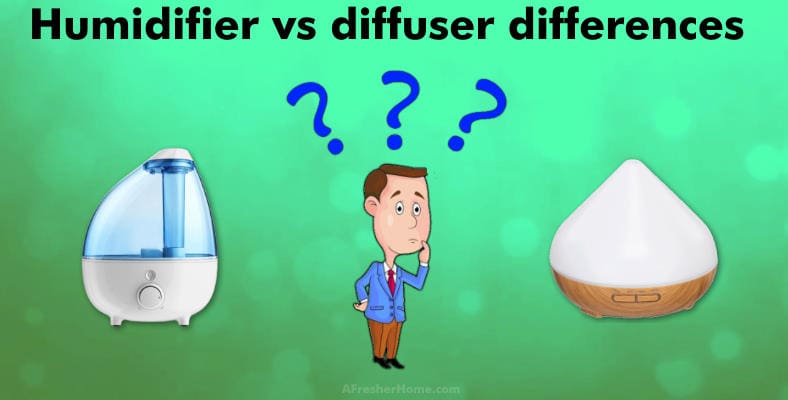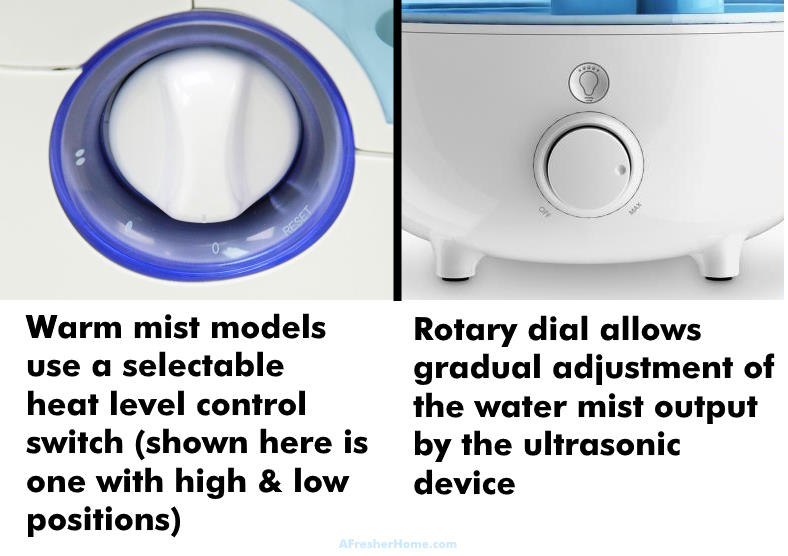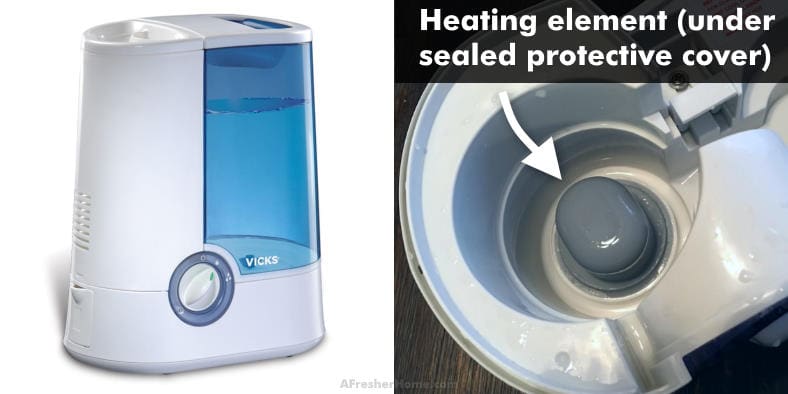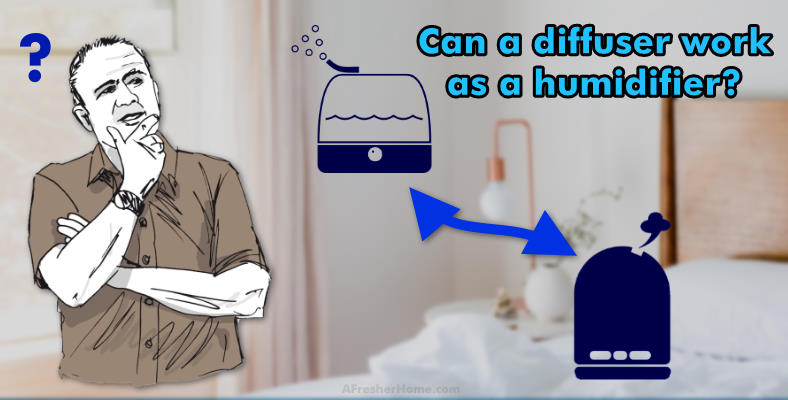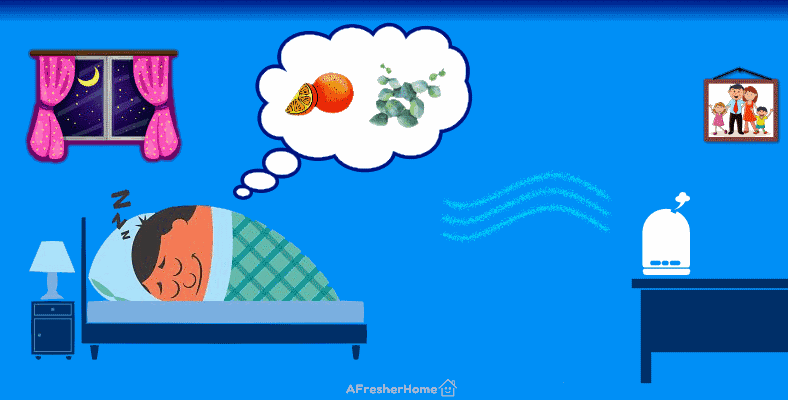Did you know that diffusers have a lot in common with certain types of humidifiers? And yet at the same time, others are very different!
That being said, what is the difference between a humidifier and a diffuser? Great question! This article will tell you everything you need to know – plus some other helpful diffuser & humidifier facts.
Contents
What is the difference between a humidifier and a diffuser?
Diffuser vs humidifier differences to know
Some humidifiers are extremely similar to diffusers while others are fairly different. The difference is that diffusers are usually smaller devices designed to be used with essential oils while humidifiers are normally larger devices designed to assist in increasing the humidity level in the air.
Here are a few things that make them similar or different:
- Diffusers are nearly identical to cool mist humidifiers in how they operate – both use an ultrasonic transducer to turn liquid water into a fine mist.
- Humidifiers usually have a larger water tank (for example, 1 gallon is common) while diffusers are often smaller.
- Warm mist humidifiers are quite different from diffusers in how they operate. They use an electric heating element to turn water into a warm steam mist.
- Diffusers are usually designed to work with essential oils. Humidifiers, however, often are not (some offer essential oil support but it’s not a standard feature).
- Diffusers may work using a lower voltage AC-DC power supply instead of direct AC (wall outlet) power. They also often include a pre-measured water filling cup instead of a removable tank to be filled in the sink like a humidifier.
Unlike diffusers, humidifiers are specifically designed to produce a lot of moisture over many hours and control the moisture output.
Warm mist vs cool mist humidifier controls are shown here. Because of how they work, cool mist humidifiers offer an adjustable control in most cases while a warm mist humidifier has a fixed number of settings (often just two: low and high). Diffusers normally don’t have an output adjustment at all.
Warm mist humidifiers vs diffusers
Warm mist humidifiers are quite different from diffusers in how they turn water into a mist that adds moisture to the air. Unlike diffusers or cool mist humidifiers, they use heat from an electrical heating element to vaporize water as steam.
That’s one reason why they’re ideal for congestion, colds, and cold weather – the warm mist is great for providing relief for those things. Another difference is that a typical warm mist humidifier uses about 260 watts of electricity.
That’s about 10 times as much as a cool mist humidifier and even more than that vs a typical diffuser, although it’s still not going to cost a lot on your power bill.
While warm mist humidifiers may offer features for cold relief liquids or menthol pads they’re often unable to use essential oils.
Cool mist humidifiers vs diffusers
As I mentioned, cool mist humidifiers and diffusers work the same way on a basic level. Both use an electronic component called an ultrasonic transducer (usually a piezoelectric element) that works at a very high frequency to vaporize water. Unlike warm mist models, they usually have a gradually adjustable output level instead of a switch with fixed positions.
It’s also not unusual to find cool mist models that can use essential oils much like a diffuser.
But if cool mist humidifiers are so similar to diffusers, why would you buy a humidifier at all? There are some good reasons for that which I’ll explain as we go along.
Why do people use humidifiers?
People use humidifiers to get soothing relief for a variety of symptoms due to dry air, sickness, or other sources of discomfort. For people who live in dry climates they’re great to have as well.
People use humidifiers to replace missing moisture in the air and get relief from a variety of dry air symptoms. Here are some examples of where humidifiers can be extremely helpful:
- Allergy relief: a healthy humidity level has a lower allergen count moving about in the air to cause you discomfort and allergic reactions.
- Sicknesses and congestion: colds, the flu, sinus problems or snoring, and congestion are relieved by improved moisture. In fact, you can get over a cold faster with healthy humidity in the air. Additionally, dry sinuses and respiratory mucous linings are more prone to causing sickness, meaning you’re less likely to get sick with proper moisture.
- Dry eye relief.
- Dry nose, throat, and similar problems are helped by humidifiers.
- Dry air symptoms such as dry & cracking skin, itchiness, and poor sleep can be relieved by using a humidifier.
- People living in dry climates: some people live in parts of the world where the air is naturally dry and uncomfortable. Humidifiers can relieve the symptoms you’ll have there.
It takes time for a humidifier to raise the humidity in a room, and that means it will need to run a long time (especially if you’re using it overnight to sleep better). Because most humidifiers have a fairly large water storage tank they can run many hours continuously.
That’s especially good when you’re not feeling well or would prefer to use yours while sleeping.
What is a good humidity range?
Generally speaking, our bodies feel best with a humidity level (also called relative humidity) above 30% and below 60%. However, an ideal range for humidity in your home is 40-50%. Don’t try to get your room to a perfect 50% for example. That’s not realistic and not necessary – just in a general range where you’re comfortable.
The best humidity level is the one that you find to be comfortable with and that relieves healthy and dry air symptoms for you or your family. A great rule of thumb is to aim for about 50%.
You’ll often notice when wintertime comes, your skin will dry out, and you can become very uncomfortable. That’s because cold winter air often has a really low moisture level – as low as 10% or so!
How do I know if I need a humidifier?
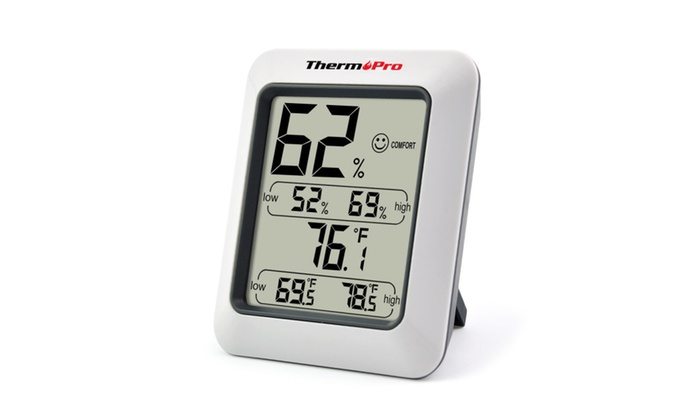
It’s actually fairly simple to know if you need a humidifier. There are two ways you can tell:
- By recognizing the effects of low humidity (dry air) symptoms
- Measuring your air’s dryness using a humidity gauge
If you can tell low humidity by some of the most common signs (cracking skin, for example) or if your humidity gauge shows 30% or less, you need a humidifier.
I strongly recommend using a humidity gauge. But why? That’s because we can’t always rely on how our bodies feel at any given time to know the air condition. It’s not a reliable or consistent way to know.
Can you use a diffuser as a humidifier?
Yes, technically speaking, you can use a diffuser as a small cool mist humidifier. However, be aware of a few things:
- It will be slower (potentially much slower) than a real humidifier for improving a room’s humidity level.
- You won’t be able to adjust the output as needed like a standard humidifier.
- It won’t be capable of running for hours and hours as a humidifier can.
You will definitely see an increase in the humidity around you since the release of water vapor from a diffuser into the air works the same way. It’s just not as effective or efficient as a regular humidifier.
Because a diffuser has a smaller amount of water, a lower water vapor output level, and isn’t really capable of running for long periods of time it’s not really a substitute for a cool mist humidifier.
Can you put essential oils in a cool mist humidifier?
Shown here is an image of me adding essential oil to a small diffuser. Unlike humidifiers, diffusers are designed to work well with essential oils. You can’t assume a humidifier will correctly release the essential oil into the air. In fact, many will do nothing but allow the oil to collect in the center and just float there!
No, most cool mist humidifiers cannot work with essential oils and you should not put oil in the humidifier. You’ll notice that many manufacturers will specifically state on the box that natural oils should not be used in them.
However, some humidifiers are designed with the feature in mind and work well with natural oils. Regular cool mist humidifiers without this feature tend to have the oil simply float on top in the water tank and not mix with the water as you’d like.
For cool mist humidifiers that do offer essential oil support, (as shown in the example here in this image) a small tray or similar is provided to make it easy to add them. You’ll open the tray, add a few drops as directed, and the humidifier water vapor will carry the oil & scents into the air along with the moisture in a natural way.
This fills the room gradually and evenly instead of having only a very intense burst of scent which disappears soon after (which is what can happen when oils are not properly).
Is it good to sleep with a diffuser?
There are some great reasons to sleep with a diffuser. It won’t hurt anything if you enjoy the pleasant scent of your favorite natural oils plus there are some very nice benefits you can enjoy:
- The moisture added to the air will promote healthy mucous tissues in your nose, sinuses, and other air passageways.
- Essential oils can be great for relieving headaches, helping you sleep better (for example: jasmine is great for this), or otherwise just enjoy your rest & relaxation more than you could otherwise.
- Diffusers are very quiet but some have a very gentle & soothing sound you may enjoy while drifting off to sleep.
- Many models will shut themselves off when the water tank runs out so there’s nothing to worry about.
- Some models offer a pleasant colored light (optional) or a nightlight that’s great for children or adults who sleep better with a low-level light on at night.
You can experiment with different essential oils (or just use the traditional recommendations) for scents that offer benefits for sleep and rest. It’s a healthy option you can enjoy as an alternative to medication or other supplements.
